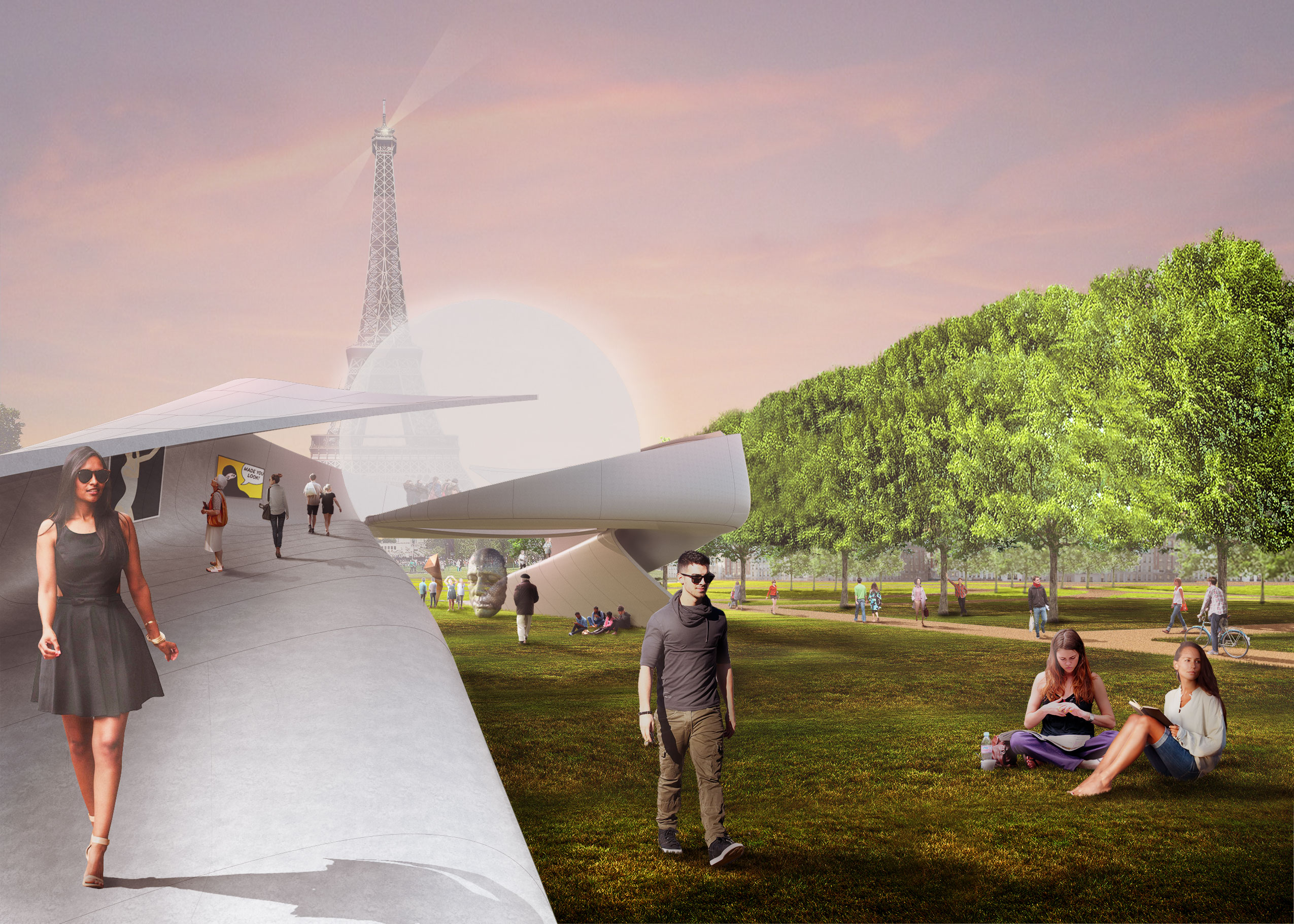
Freedom from Disturbance
The intention of this pavilion is to encourage communication and contemplation with an awareness of contemporary global crises and the underlying human nuances from which they stem. The swooping stone structure is characterized by two rising arms that lead to a semi-enclosed forum. Each arm features a curated journey through specific artistic themes, arranged by scale from full-size sculpture to smaller, hung pieces.
Identifying as formally and materialistically different from the rest of the pavilion, the forum is intended to promote conversation in an effort to help visitors engage with each other with a new awareness of global issues. The space acts as the pearl of the pavilion, rising from the crux of the form and representing a mindful, directional shift towards harmony across all cultures. The mouths of each path that empty into the forum are turned around the enclosure to face the direction from which they started, symbolizing a retrospection of the concepts explored on the journey through the pavilion.
In collaboration with Jacqueline Mignone.
Submitted in June 2016 as an entry for 'Paris Pavilion: The Art of Peace', sponsored by Archasm.


(1) population, circulation, and dimension (2) longitudinal elevation
return to top
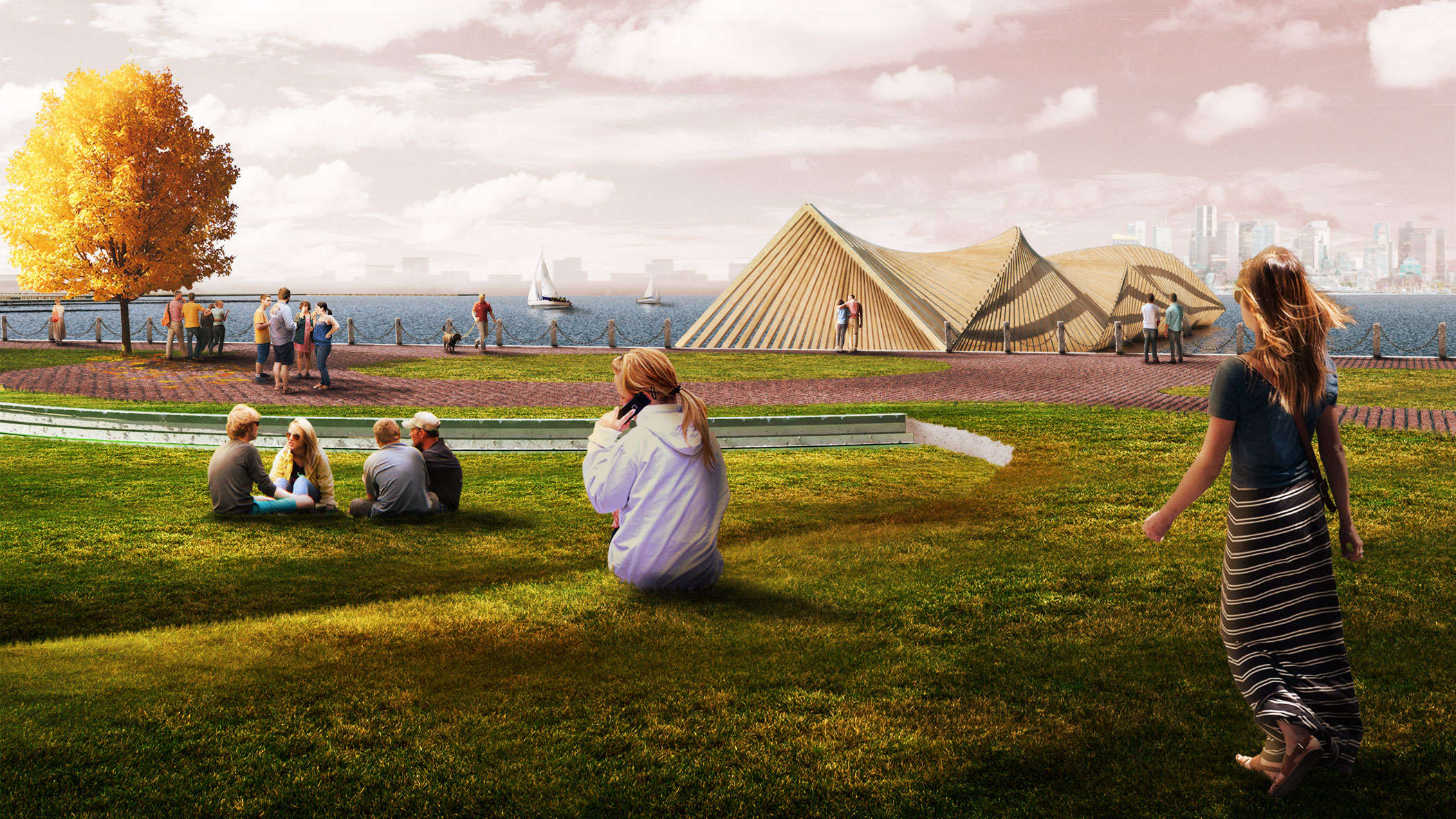
Oscillating Walkway
East Boston’s shoreline features a range of tidal conditions with a variety of unique sectional and planar qualities. However, one of the most interesting conditions lies along the edge of Piers Park, where a shoreline pathway’s structure is only revealed during low tide.
Drawing from the sinusodial nature of its site, the Oscillating Walkway explores the constantly changing frame of experience. A series of timber frames twists out into Boston Harbor, encasing a buoyant walkway. While the structure itself is stagnant, its dynamic form and tide-responsive platform provide an ever-changing spatial ‘snapshot’ of experience. This snapshot rotates via the wooden frames as occupants travel the walkway and is either truncated or elongated as the platform rises and falls with the tide.
Instructor Ann Borst. Academic, 2013.
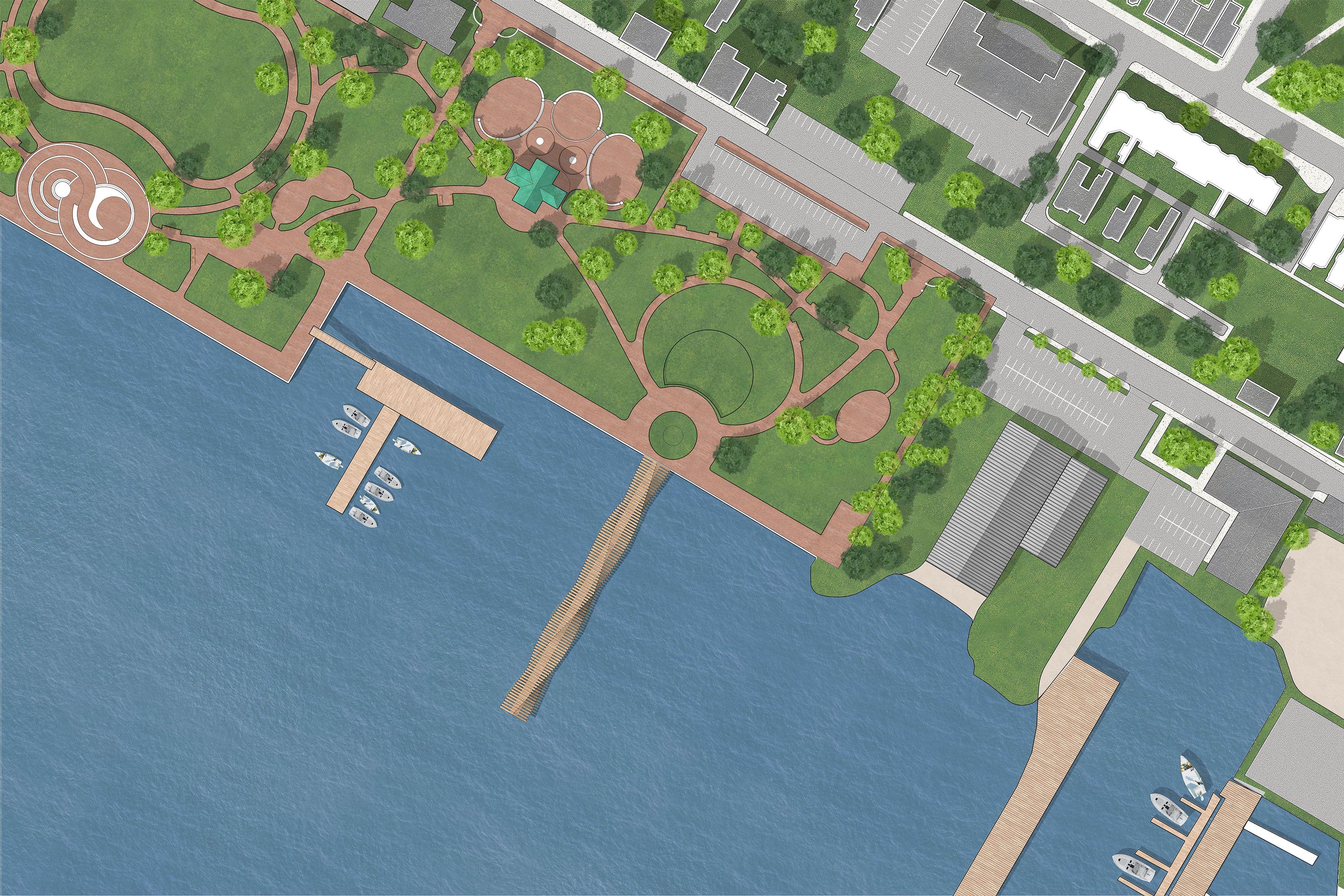
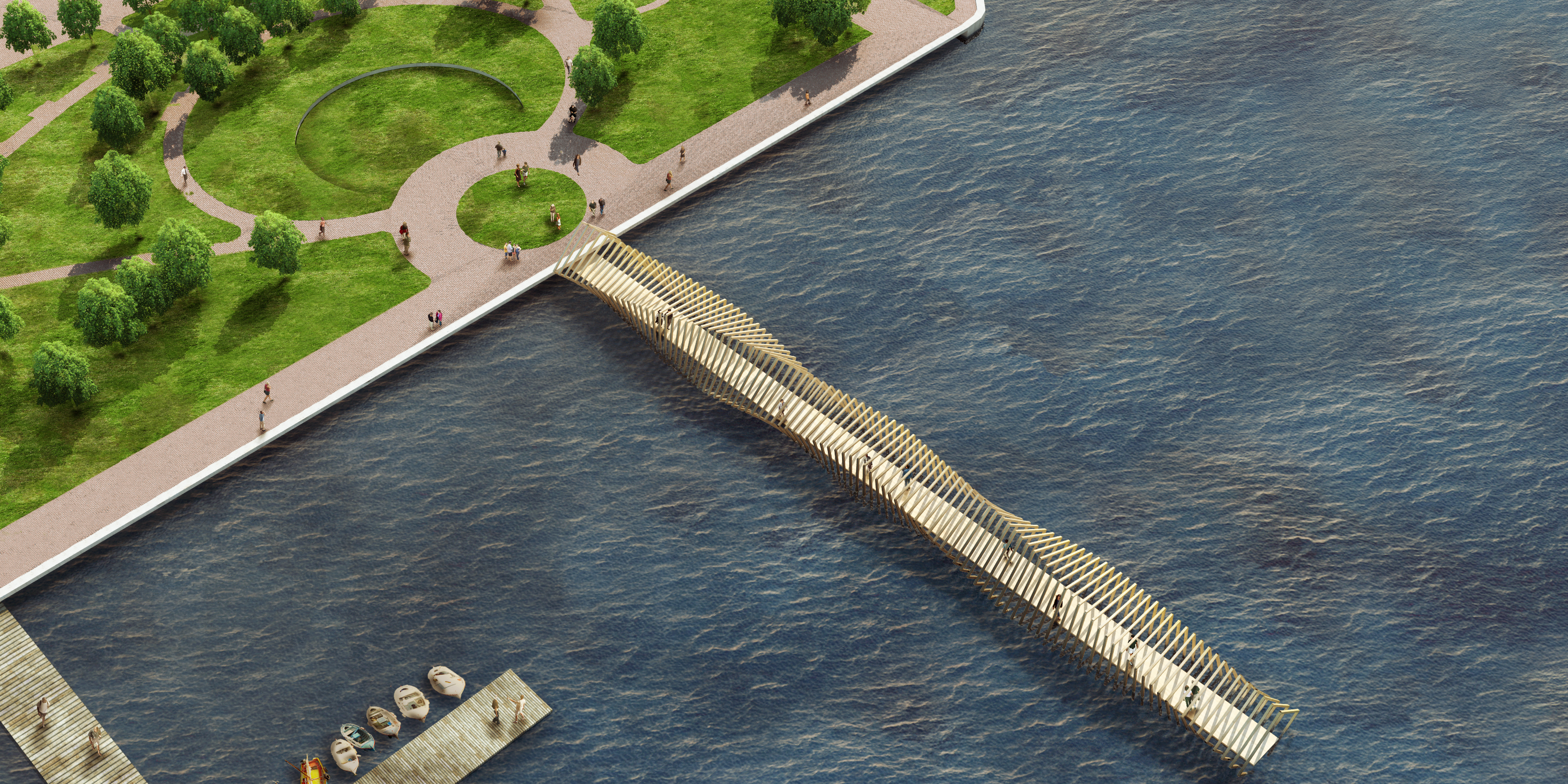
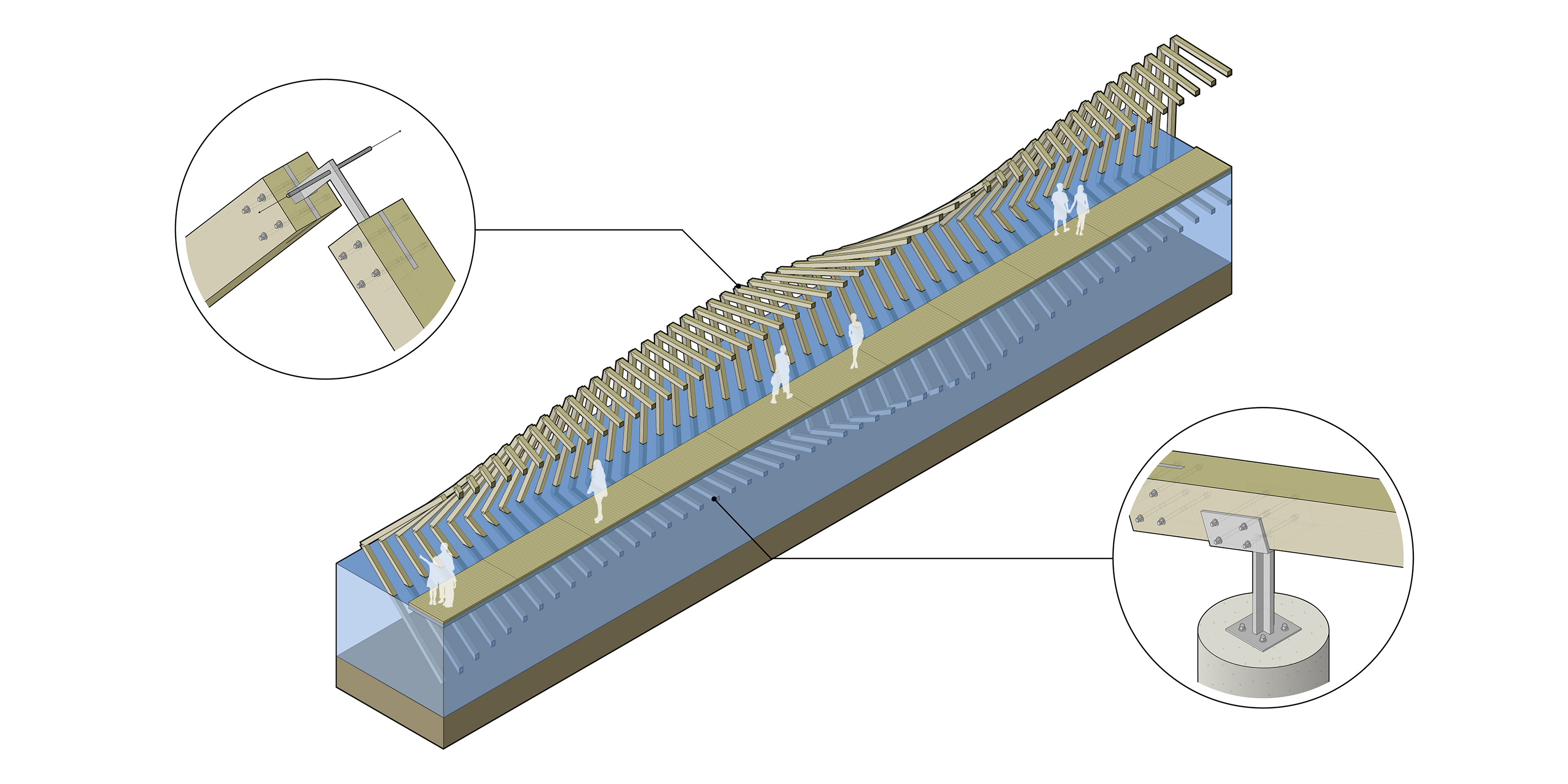
(1) site plan (2) aerial at twilight (3) tectonics and detailing
return to top

The Ecology of Learning
In a city district looking towards the future, Paul Rudolph’s aging Government Service Center is a landmark in dire need of transformation. A vast concrete complex bordering Boston’s West End, the immense amount of hardscape creates a number of programmatic, and, more prominently, ecological problems on the site.
Through a series of additions, landscape initiatives, and interior transformations, the Government Service Center will be redefined into an ecology-themed complex; the epicenter of a new eco-district for Boston. In an endeavor to use architecture and urban design as a vehicle for social revitalization, the complex will feature an ecology-focused school, environmental research facilities, and public education programs. The existing plaza and parking structure will be replaced with a learning landscape based on a high marsh or bioswale that will collect stormwater from the site and surrounding watershed to mitigate runoff, purify the water, and allow for its natural reintigration and use in gray water systems. A series of public spectacles and pavilions will put the center’s processes on display for its community.
In collaboration with Greg Jimmie, Pablo Rivera, Anthony Rodriguez, and Lisa Angulo.
Instructors Mark Pasnik and Carol Burns. Academic, 2014.

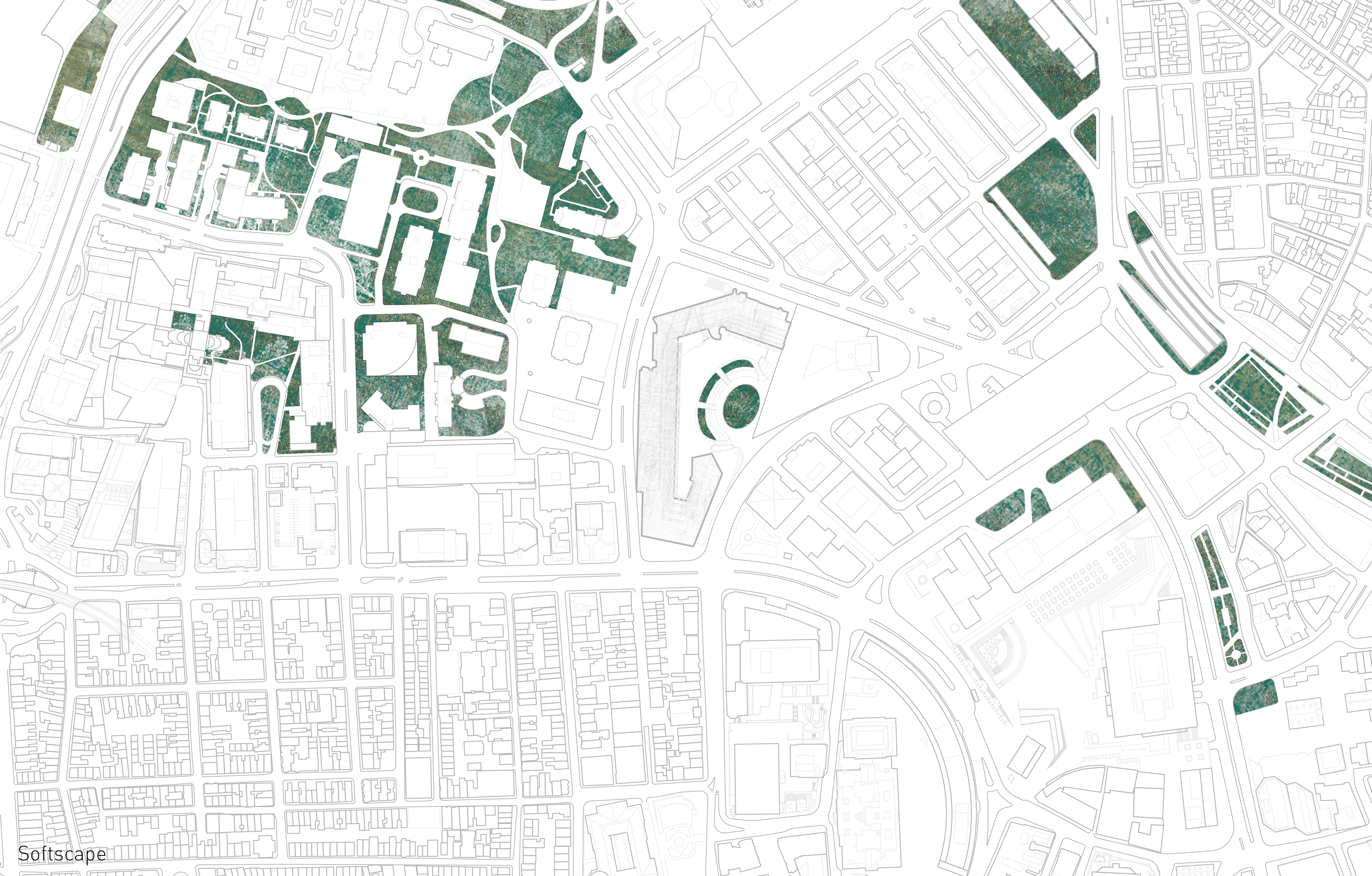

(1) contextual hardscape (2) contextual softscape (3) existing drain locations
The initial design concepts stemmed from observations of the areas of hard and soft scape, both on the site as well as the surrounding area. Uniquely large and introspective, Governement Service Center’s form and footprint provide the opportunity for the creation of a unique, vibrant micro-environment in the concrete jungle that is Boston’s government district.
The design solution is implimenting a constructed high marsh system that acts essentially the same as a bioswale, but at a larger scale: the landscape allows water to filter through and be collected for reuse in the building. Data collected from the Oregon Environmental Council shows that one square unit of marshland can offset the runoff of an area thirteen times its size. To reconcile with the massive size of the complex, the performative green space is introducted to both the central courtyard as well as the stepped roofs.
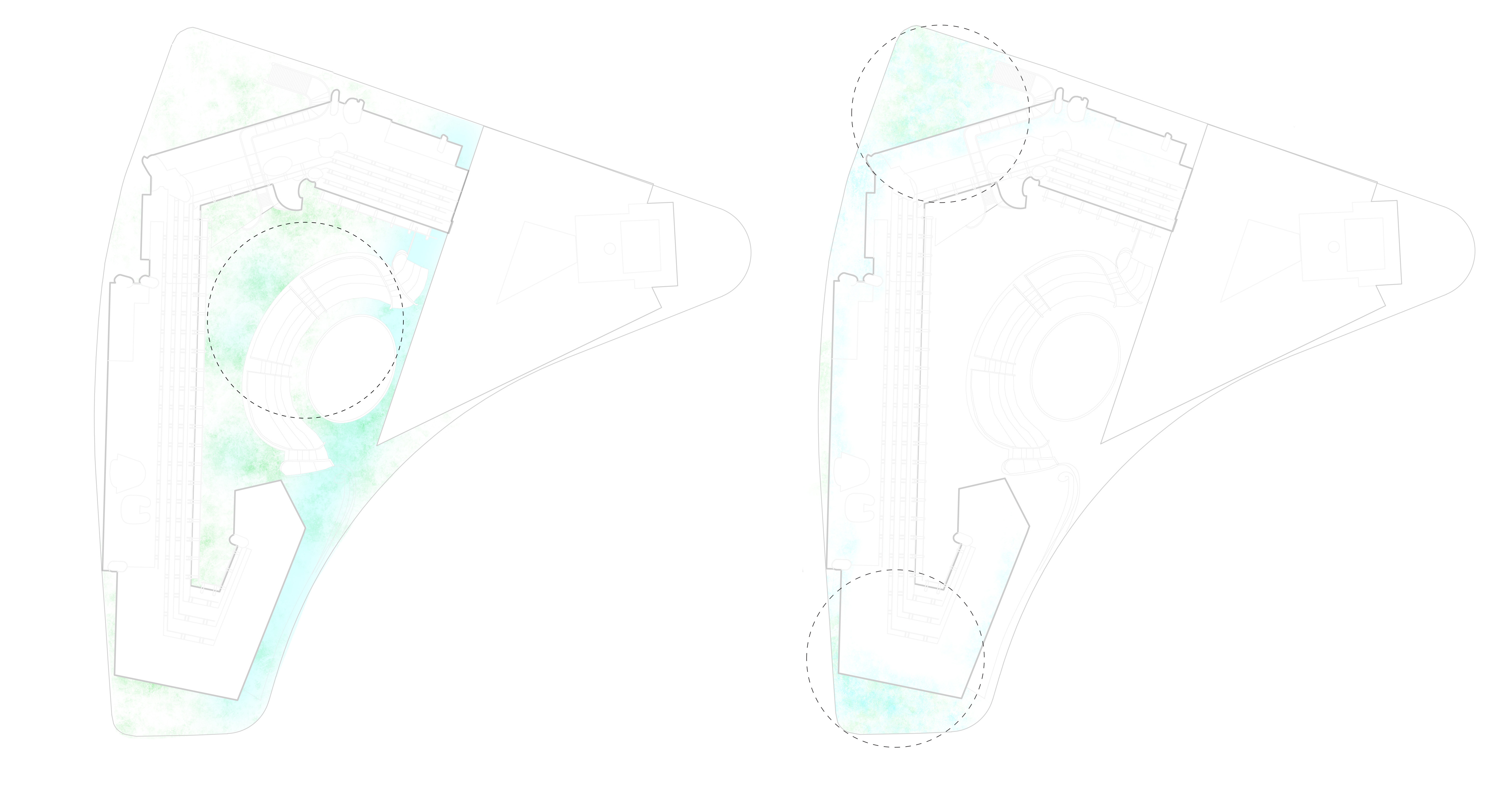

(1) interior high marsh and exterior public spectacle (2) building division and green roof
The interior of the structure is split into three parts: predominantly, it serves as a new high school with focuses in math and sciences (marked red), which is partnered with an addition of spaces for scientific research related to weather and water sustainability (marked green); the remainder of the space is allocated to existing government offices (marked blue). The enormous scale of the building allows for educational, private, and civil sectors to all interact with each other while still maintaining a large portion of private space. The large courtyard of the complex is reconstructed as a rainwater-collecting landscape, and all new construction feature performative green roofs.


site sections

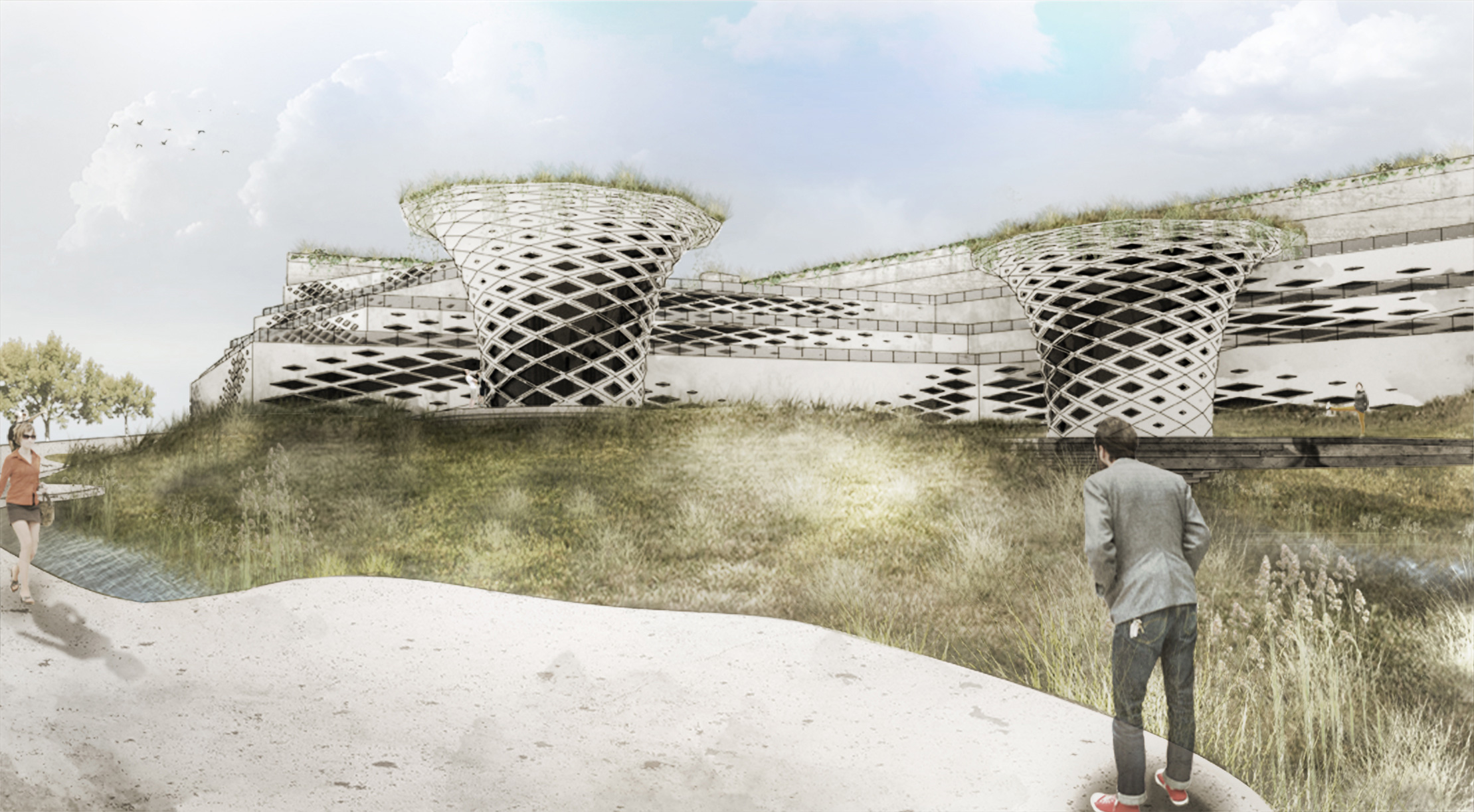
(1) in the summer (2) in the fall
return to top
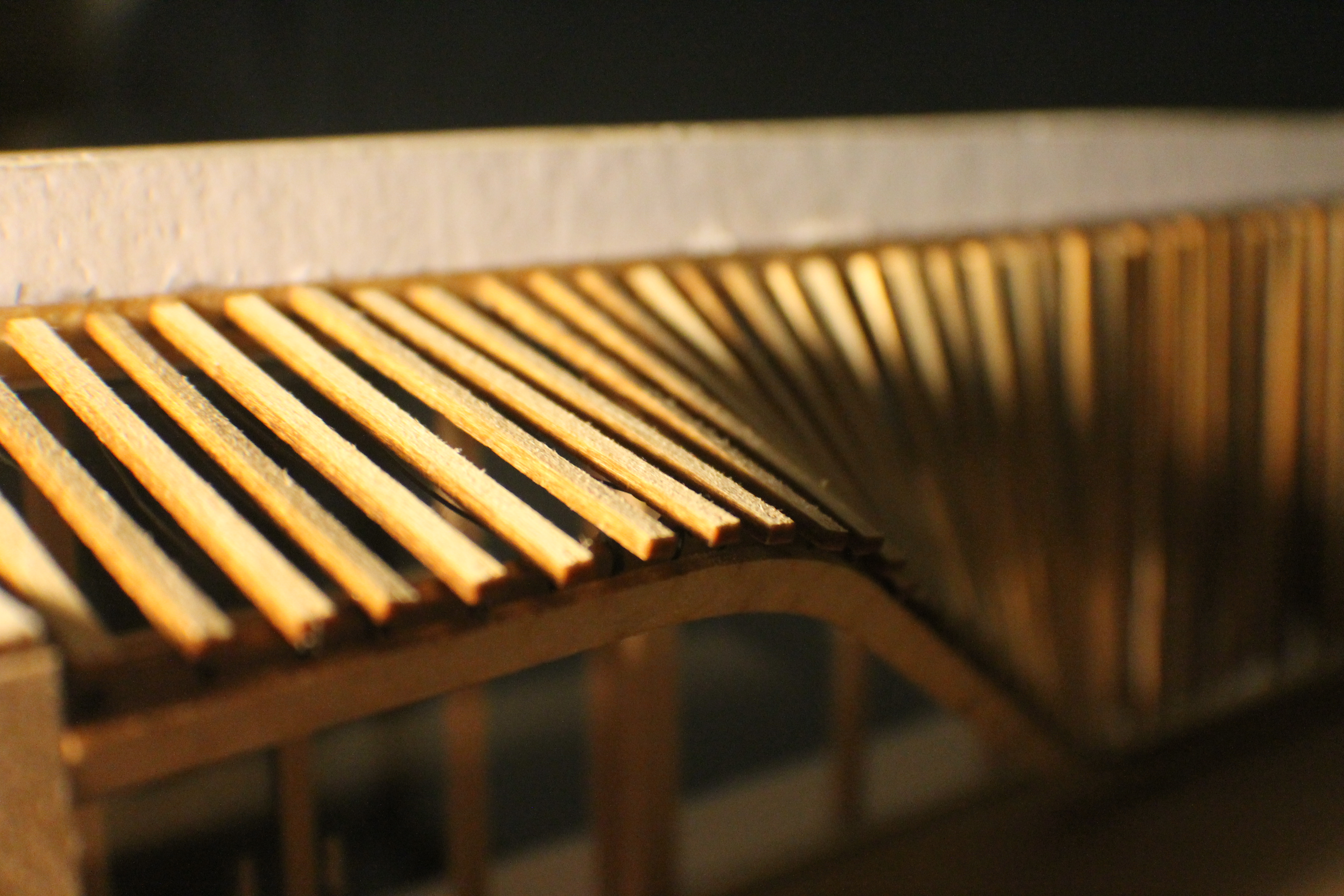
Density on the Water
Across the harbor from Boston’s busy downtown, an unorthodox variety of shipyards, neighborhoods and public centers lie sprawled across East Boston’s shoreline. Situated between Piers Park and the Marginal Street Shipyard, this center for wooden shipbuilding also features public spaces for exhibits, observation, and learning.
This proposal revolves around concepts of scale and density. There is a range of spatial and scalar proximity to the site, which is most apparent in the juxtaposition of structures for boats and structures for humans. The design is a response to this range, with a spatial narrative that moves from dense, tight spaces into open, flowing space. The sequence engages the program and establishes the basic form of the structure. A wrapping wooden panel façade is an interpretation of the site study and, through its articulated undulation, peels away to reveal specific visuals to interior space.
Instructor Ann Borst. Academic, 2013.
More images from this project will be uploaded shortly.
return to top

















